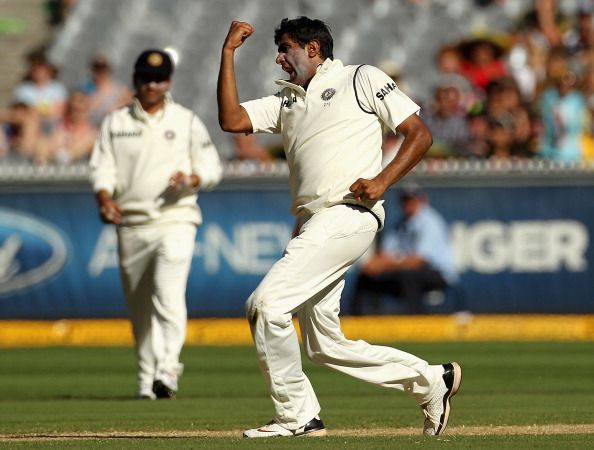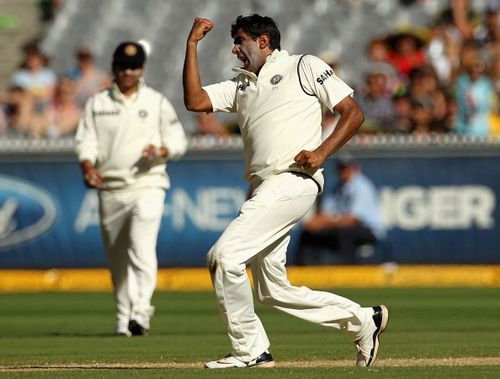
Australia in India: Spin - a boon or bane?

Parvez Rassol is an ordinary bowler with a big heart. Jammu and Kashmir, the state, faces a magnitude of problems rushing in every single day, but Jammu and Kashmir, the cricket team, produces these flashes of brilliance which add value to the lives of the cricket lovers in the Valley. Rassol had an extraordinary season for the team in the lesser Plate League, and was even presented with an opportunity to play for India A against the visiting English team earlier this year. Though he didn’t make an impact then, Rassol has the eyes of the selectors gleaning over him, and his performances henceforth will be scrutinised and analysed to see if the window of opportunity can indeed be pulled open for him.
Rassol spun hula hoops around the Australian batsmen and picked seven wickets, taking home the ball and the headlines with him. Rassol will have his fair share of inches in the tabloids tomorrow, but more importantly, so will the certain ‘Australia versus spin bowling’ issue.
Unlike the horribly misconceived masterplan of the Indian team last year, when they pulled back all spinners for the England practice games, the Board President’s XI decided to play two spinners against the incomplete Australian side, and so far, it has paid its dividends. Nine of the ten wickets were shared by Rassol and the talented Sarabjit Ladda, as Australia fell to 241. In their defence, Australia’s frontline batsmen are yet to arrive, but eleven of the seventeen men in the squad do seem to have a problem against spin. Who is to say the rest of the six also aren’t particularly savants of playing the turning ball?
Australia have always had trouble with Indian spin bowling, particularly with an angry turbaned man who strolls by the name of Harbhajan Singh. Harbhajan hasn’t had a particularly path-breaking Ranji series, and has been on a lean patch for an extended period of time. But there’s a startling level of aggression he displays whilst playing the Aussies which may well be the sole reason for his inclusion in the squad. India thought they could outwit England with their spin. Is their similar assumption here justified, or is it another case of ‘not learning from their mistakes’?
India’s spin bowling resources have depleted. There used to be a time when India was known as the land of spin, and it wasn’t just politicians and people, but batsmen too who had no idea of what was going on around them. But over the years, and most significantly after Anil Kumble‘s retirement, Indian spin has reached a point of sluggishness. Kumble was an attacking bowler, coming at batsmen with the ferocity of a fast bowler. The current crop may well be replaced by teapots and it wouldn’t make a difference. Which is why the inclusion of Harbhajan is so important.
Harbhajan may not find himself in the playing eleven through the series, but he could be the ghost behind the scenes, silently inciting the players to give it their all and more against Australia. They’ve struggled against Rassol and Ladda. Ashwin and Ojha could prove to be far greater matches, and are key to India’s success against them. But there is the aggression factor which could tilt the scales in their favour.
Ashwin and Ojha aren’t great bowlers. We have to face that fact. They are no Anil Kumble or Bishen Singh Bedi, but they have their set of talents and have potential in abundance, but their effects and use lie in their attitude. Last month, against Pakistan, Ishant Sharma was at loggerheads with Kamran Akmal during an ODI, and harassed him with some good, aggressive bowling. That moment of adrenaline is what the Indian team lacked and Ishant wanted to bring it back.
Ashwin and Ojha are not like that. They seem like the boys who remind teachers of homework, and squeal discreetly when exposed to the sudden bark of a dog. Against a team like Australia, you require a certain amount of mental strength in order to combat their intrusive mind games. Ojha and Ashwin could easily succumb to their pressure and lose it on the cricket field, causing an enormous amount of runs to leak at wrong periods of time.
Skillfully too, the two don’t bring anything new to the table. They’re simple, straightforward and traditional, which isn’t always a bad thing, but when up against Australia, you don’t regard it as ‘always’. Australia are notoriously weaker against spin, but so were England and that didn’t turn out how you, me, or Dhoni thought it would. India need to put up a far more menacing stand with the bowling attack if they wish to see any success against Australia, or any team for that matter.